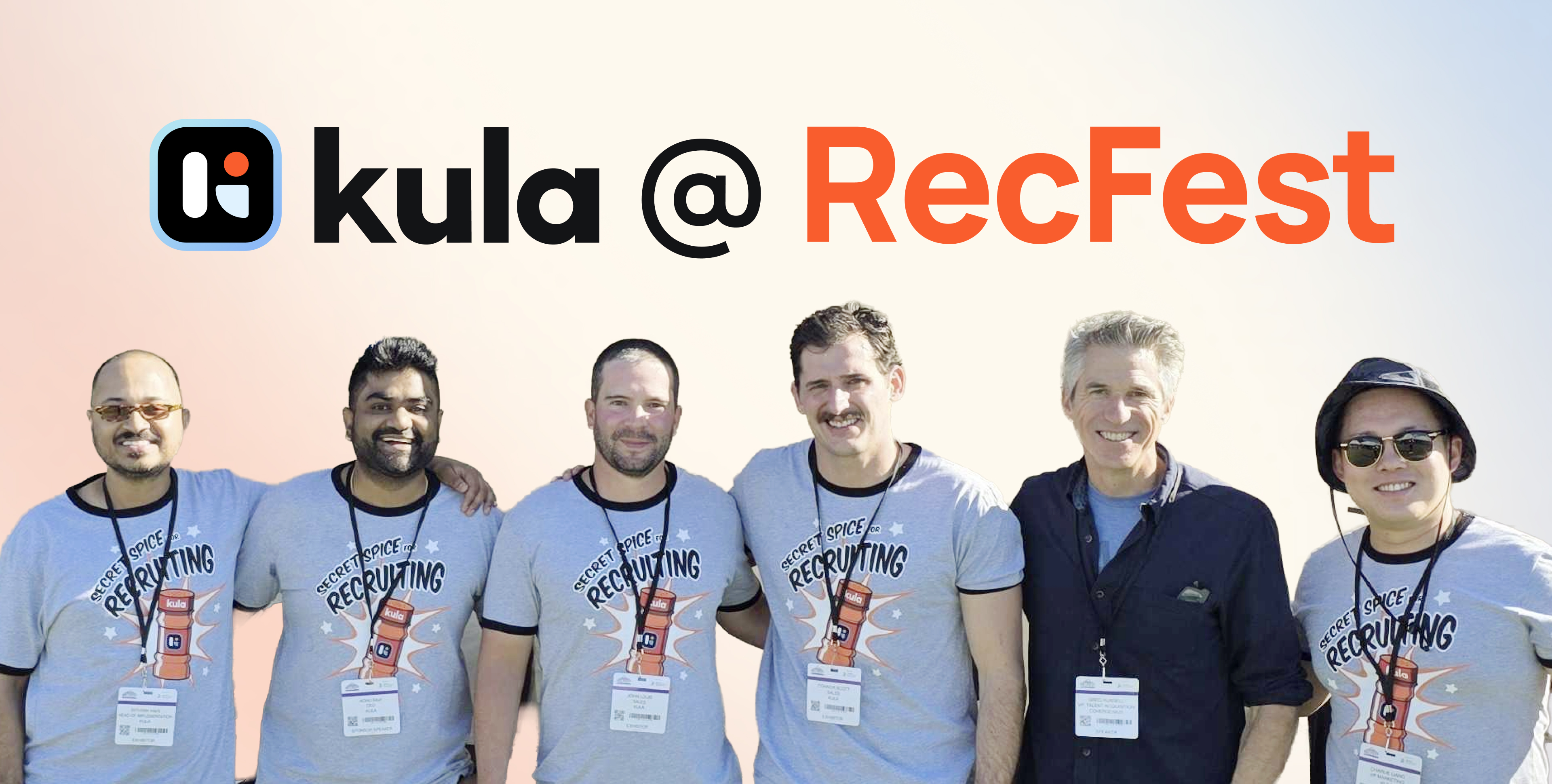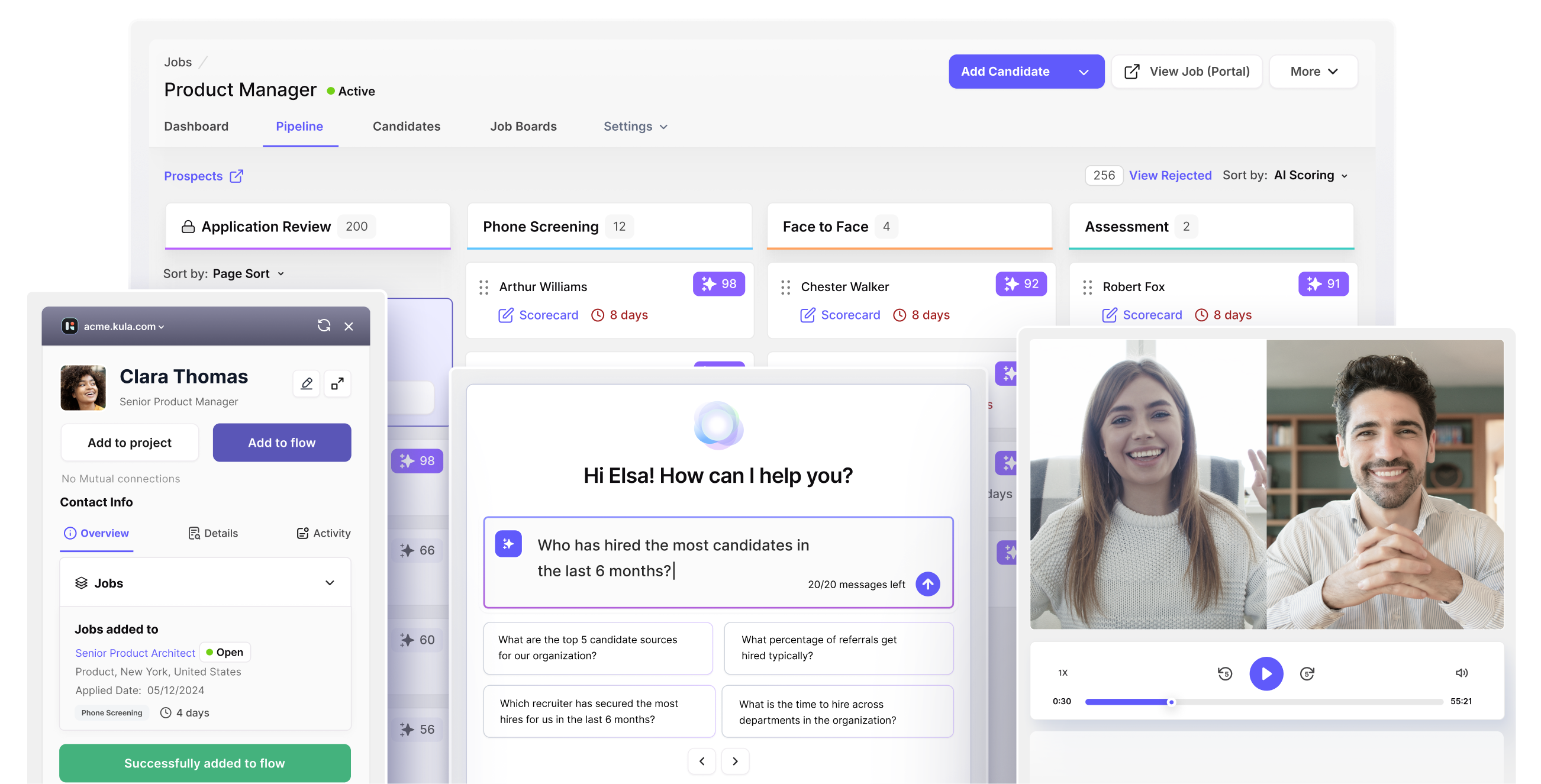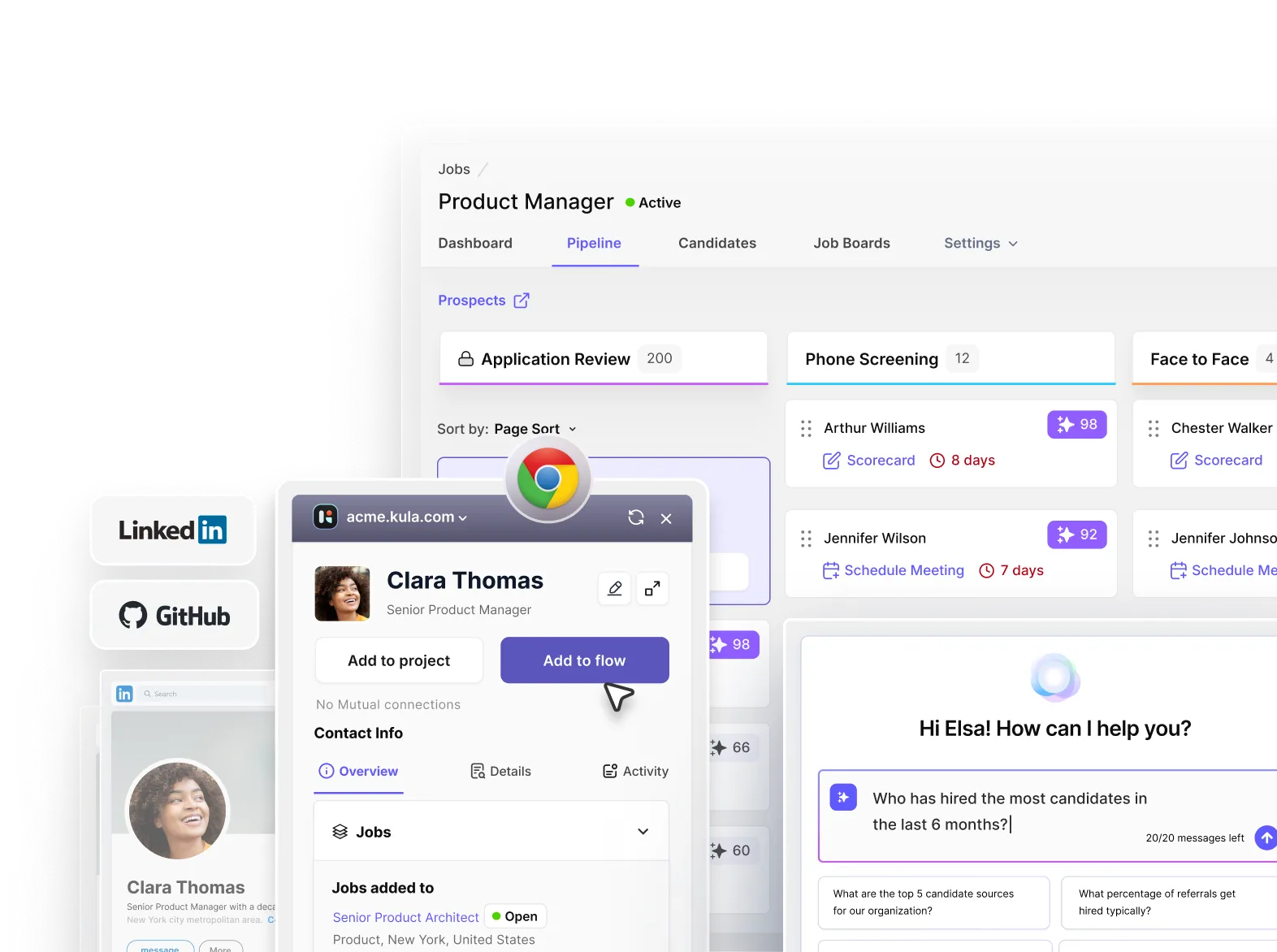Book a 30-minute demo and learn how Kula can help you hire faster and smarter with AI and automation
Poor candidate experiences are a bad advertisement for your organization's culture.
It can tarnish your employer brand, turn top talent away, and even lead to negative reviews that reach far beyond your immediate network. Every frustrated candidate is a missed opportunity, increasing time-to-hire and driving up recruitment costs.
While every company strives to provide a positive candidate experience, many recruiters see this as an extra burden, as they are already overwhelmed with screening numerous candidates.
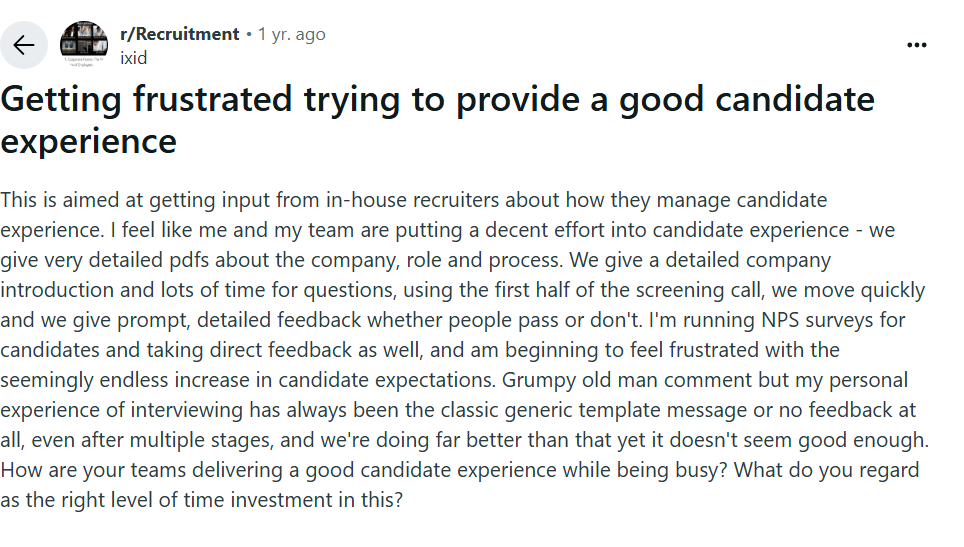
Well, the good news is—it’s not that difficult. AI in recruiting? It’s not the future—it’s the now!
With this guide, learn how to deliver a consistent candidate experience with minimal effort using AI and automation in your 2025 recruiting process.
Steps to achieve exceptional candidate experience in 2025
1. Defining and communicating employer brand
82% of applicants consider a company's employer brand when applying for a job. This is simply because an employer brand tells job seekers about the company's values, culture, and vision.
Top candidates don’t just choose a job—they choose an identity, lifestyle, and future. They prioritize companies with strong reputations and positive cultures. This is one of the reasons why you lose top talent to your competitors.
Here is how to establish employer branding in recruiting:
- Showcase company culture & mission in the job description
- Create a brand-aligned career page and application
- Maintain positive employee feedback and respond to concerns
- Share employer branding content on LinkedIn, Twitter, and Instagram
- Highlight the company's mission, perks, and work culture clearly
- Showcase DEI efforts to attract diverse talent
This is how you can start:
Step 1: HR leaders must conduct an internal audit to understand the company’s perception. With this information, refine your employer value proposition (EVP) to influence your job applicants to choose you over competitors.
Step 2: Highlight these values in job postings, career pages, and recruitment marketing materials. Company leaders can also use LinkedIn to share their company’s values.
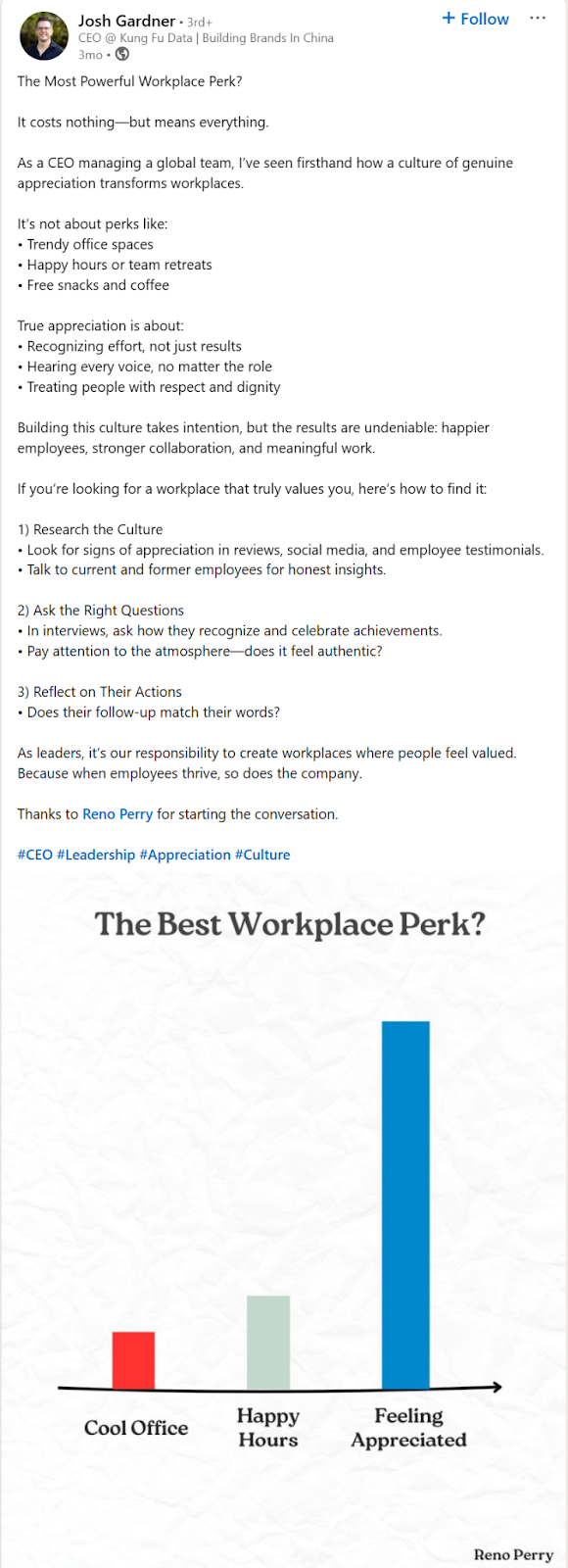
Employee advocacy is another way to build your employer brand. You can also create a social strategy for your employees where they, once in a while, share their positive experiences with your company.
Step 3: Transparency is honesty, and top talent appreciates clear insights into company culture, hiring timelines, salary & benefits, and expectations. Maintain consistent communication via automated emails to inform candidates about updates and hiring schedules.
2. Optimize job descriptions and posting
Job descriptions are often the first touchpoint between job applicants and an organization, making them a crucial element of the hiring experience.
A poorly written job description with unrealistic expectations and unclear expectations only brings talent who have no idea why they applied in the first place.
In a recent Indeed survey, almost half (42%) of the employers were forced to revise their JD because it attracted way too many unqualified candidates.
Here is what to do with job descriptions:
- Be clear and concise about non-negotiables, as this will help you attract only qualified candidates.
- Include a short yet descriptive job title. It boosts visibility in search engines and job boards.
- Write job descriptions jargon-free. Outline responsibilities, requirements, and expectations, but all in an easy-to-understand language.
- Include inclusivity and avoid biased language.
- Most importantly, job postings should showcase the company's culture and benefits. Instead of general promises, mention specific perks.
- Use an ATS tool that will allow you to create a JD with GenAI, as already 11% of talent acquisition pros are boosting their job post effectiveness with it:
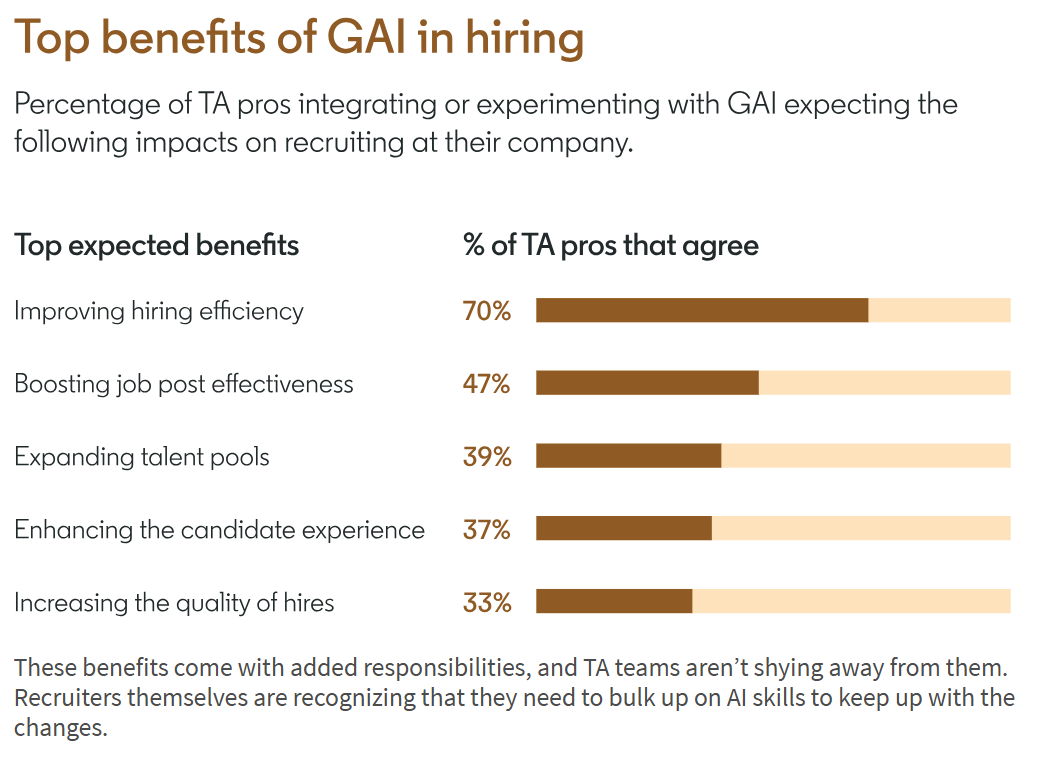
Learn job description optimization in detail from here.
The goal of an optimized job description is to attract the right talent, and that right talent must not feel confused about the expectations. Now, what will seal the deal is a quick application process.
3. Simplify the application filling process
A lengthy or complicated process discourages top candidates from applying because of
- Scarcity of time
- Unnecessary mental effort
- First impression of the culture’s inefficiency
Instead, organizations must adopt a structured yet flexible application format for all hiring needs that captures essential information without overwhelming applicants.
Here is how to achieve a structured job application process:
- Keep your application short and include only essential questions to improve completion rates
- Use the ATS tool to provide features like autofill, one-click apply, LinkedIn profile imports, resume parsing, and save options
- Your job application must be mobile-friendly, as 45% of job seekers search for jobs via their mobile devices
- Automate an email confirming the application submission and, if possible, provide a timeline up to when they can expect to hear back
4. Maintain consistent communication and transparency throughout
Clear and consistent communication throughout the hiring process builds trust and improves the candidate experience.
Candidates appreciate timely updates, clarity on hiring timelines, and honest feedback, which also differentiates your company from your competitors.
Active communication in the recruiting stage includes:
- Sending automated responses about their application progress
- Addressing candidate queries quickly via email, chat, or phone
- Sharing interview format, key topics, and expectations beforehand
- Providing constructive feedback post-interview, even if the candidate isn’t selected
- Clearly outlining salary, benefits, and next steps to avoid confusion
- Engaging new hires with welcome emails, training schedules, and introductions
Here is how to do it:
Step 1: Implement a structured communication framework such as automated email updates, chatbot-assisted FAQs, and scheduled recruiter check-ins to ensure candidates never feel left in the dark.
Step 2: Add transparency to your communications. Clearly define job responsibilities, expected interview rounds, and compensation range in your hiring stages. Also, clarifying company culture, values, and work-life balance can help applicants determine if the company is the right fit.
Step 3: Add a feedback system, where recruiters, no matter what the outcome, hiring or rejection, must give feedback to the candidates. This is important because it helps them know that you acknowledge their efforts and feel valued. It also creates a positive experience so that these candidates can consider applying in the future and also associate as a customer.
Teams can do it in three ways:
(i)

(ii)

(iii)

Step 4: Moreover, two-way communication should be encouraged. Your team should dedicate effort and energy to answering genuine questions or concerns from qualified candidates. This assures the candidate of your values and culture.
Step 5: Refine your communication strategy by collecting real applicant feedback through surveys to improve the hiring experience. However, ensure you do it strategically—learn why from this Reddit post:

5. Conducting structured and engaging interviews

A well-structured interview process ensures consistency, fairness, and a positive experience for candidates. This also reduces bias and ensures that all candidates are evaluated fairly.
Here is how to do it:
Step 1: Decide on the required number of interviews it will take to assess candidates. Make sure you inform all the selected candidates about the process beforehand, including timelines and any preparation requirements from their end. Also, throughout the process, keep them updated with automated emails about their progress.
Step 2: You must first test and decide on a standard interview format that will be implemented for your future hires. Develop an interview format based on specific recruiting goals and objectives, and make sure the chosen format aligns with the company's values and practices.
It makes the interview process smoother for both employers and candidates.
Step 3: Personalize each interview according to the candidate to ask specific questions for evaluating individuals. Here’s one tip:
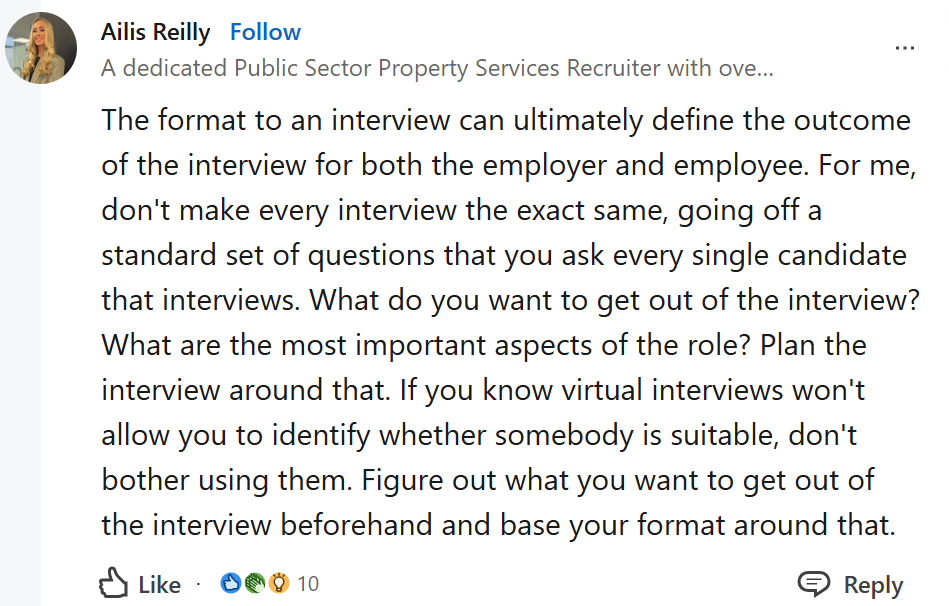
Step 4: Include scenario-based questions in your interview process because:
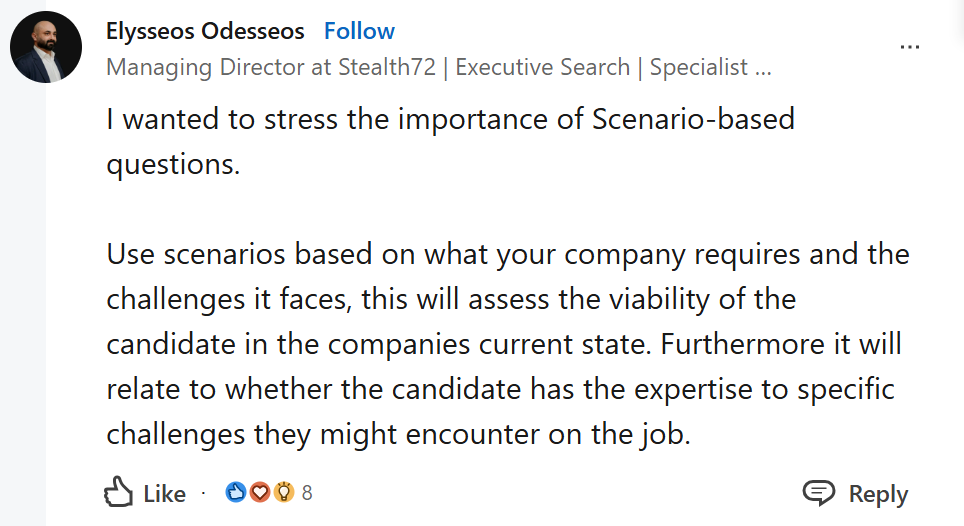
Candidates feel more involved and valued when discussing real scenarios rather than generic questions. And, for recruiters, it provides deeper insights into a candidate’s critical thinking and decision-making skills.
Step 5: Another crucial aspect is interviewer training. Many hiring managers lack formal interview training, leading to inconsistent assessments and potential biases. You must invest in interviewer training programs that cover active listening, unconscious bias reduction, and structured evaluation techniques.
Step 6: You must also use a good ATS tool that offers advanced AI features specifically for interview scheduling and assessment.

6. Decision-making and offer management
Fair and comprehensive candidate assessment is a crucial step for a positive candidate experience, as it allows recruiters to
- Add qualified candidates to the team
- Provide detailed and accurate feedback to rejected candidates
- Bring diversity and inclusion to the team
- Create a credible talent pool for future hiring
For effective decision-making, companies must establish a clear evaluation framework. Using the best ATS tool with trustworthy AI will help simplify the process.
Prefer ATS with an AI that reduces bias. We at Kula believe in the same vision:

Kula also makes decision-making easy for your team with:
- An AI scoring model in applications only focuses on top talent

- Post-interview assessment features to automatically collect feedback and scorecards from key stakeholders

- Conversational AI to collect any insights in just a second to simplify candidate feedback
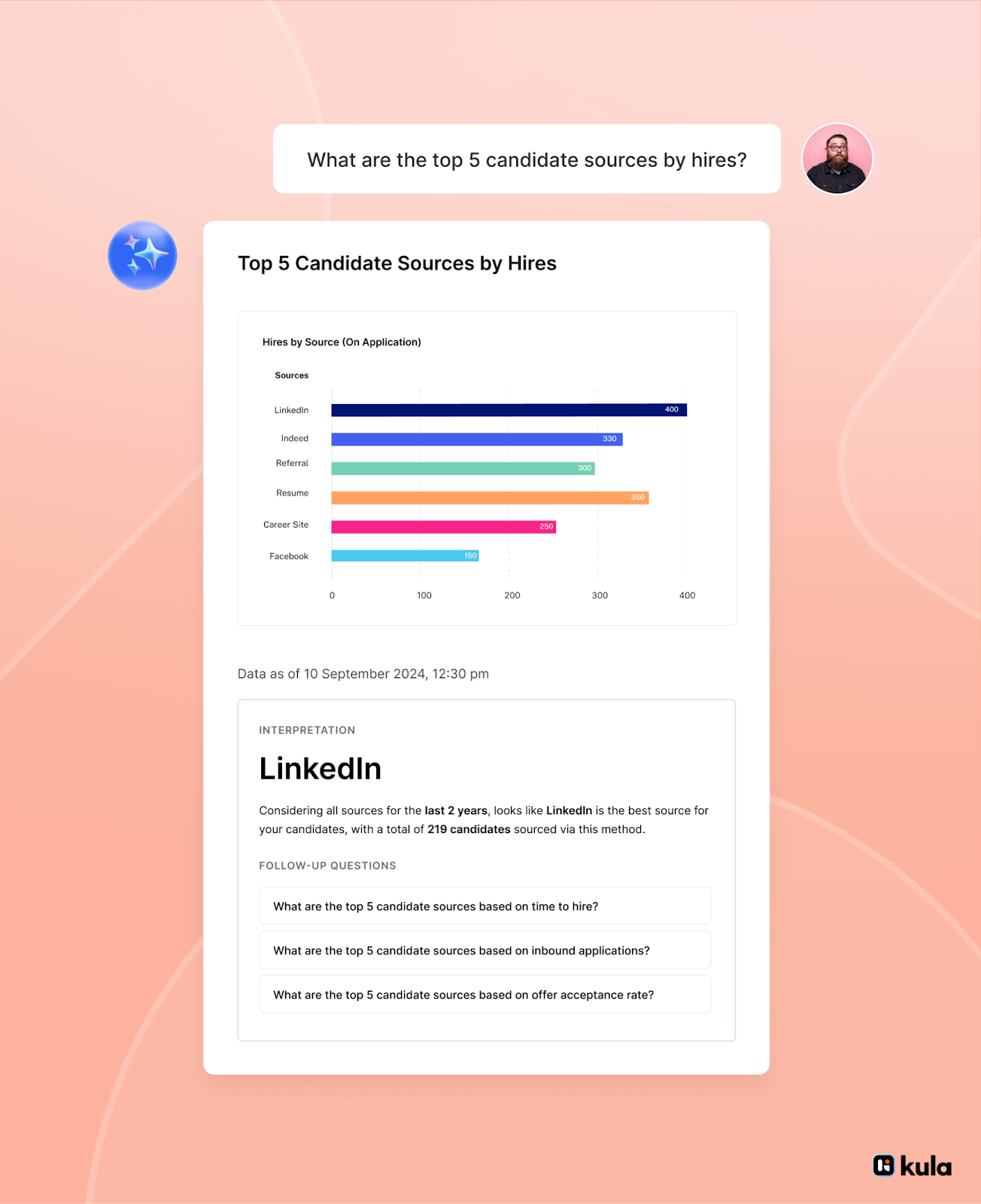
Once a decision is made, companies should promptly update rejected candidates and provide feedback. This helps leave a positive impression and encourages them to apply again in the future.
For selected candidates:
- Make sure the offer aligns with market trends, the candidate’s expectations, and internal equity
- Personalize offers and highlight career growth opportunities, work-life balance benefits, and company culture to enhance the acceptance rate
- Simplify the approval process using digital offer letters and e-signatures to avoid unnecessary delays
- Maintain proactive communication to address candidates' hesitation points
7. Measure and improve your hiring process
You must clearly define key recruiting KPIs that directly impact the candidate experience and effectively establish their importance to the hiring team.
Recruiting KPIs that help measure candidate experience include:
- Time-to-fill
- Time-to-hire
- Candidate Satisfaction Score (CSAT)
- Net Promoter Score (NPS)
- Offer acceptance rate
- Candidate drop-off rate
- Quality of hire
Measuring these recruiting KPIs will help you understand the current efficiency of your hiring strategy, and establishing the policy of regular interval reviews will ensure continuous improvement in candidate experience.
To simplify this process, use a smart ATS tool for detailed KPI reports, AI analytics, customized reports, and actionable hiring dashboards.
Also, hiring teams can perform candidate experience surveys to gather direct feedback and understand candidate perceptions—insights that KPIs alone cannot reveal.
These surveys will help you understand recruiter responsiveness, interview clarity, and overall candidate satisfaction.
Here is how to perform such surveys:
Step 1: Define survey goals, for example, what you are looking to measure (e.g., application process, interview experience, recruiter communication)
Step 2: Send surveys post-interview, or post-hiring decision, and keep it short with 5-10 targeted questions for higher response rates
Step 3: Combine multiple-choice, Likert scale (1-10), and open-ended questions, and promise confidentiality.
Step 4: Analyze & act on insights
To wrap it up
Positive candidate experience is an important factor in attracting top talent, as it directly reflects the company’s culture and values.
A company must dedicate serious efforts to increase candidate experience because not only does the negative experience get shared online easily deterring the company’s reputation, but also, even your rejected candidates can be your next customers.
Providing a good candidate experience becomes easy with the right ATS tool that offers you AI and automation for fair assessment, consistent communication, and fast insights.
DeepScribe, a healthcare AI platform, was able to cut costs by 30% with Kula. According to Samantha Stambaugh, Head of Talent at DeepScribe, they absolutely loved Kula for:
- Email templates and automated triggers that instantly handle candidate updates
- AI-powered scoring filters that help focus on the right candidates
- An actionable dashboard that makes tracking progress easy
Learn more details about what Samantha says about their hiring experience with Kula.
Decide for yourself—book a personalized demo today and hear from our experts on how we can simplify your hiring process and make it more efficient for your team.

















